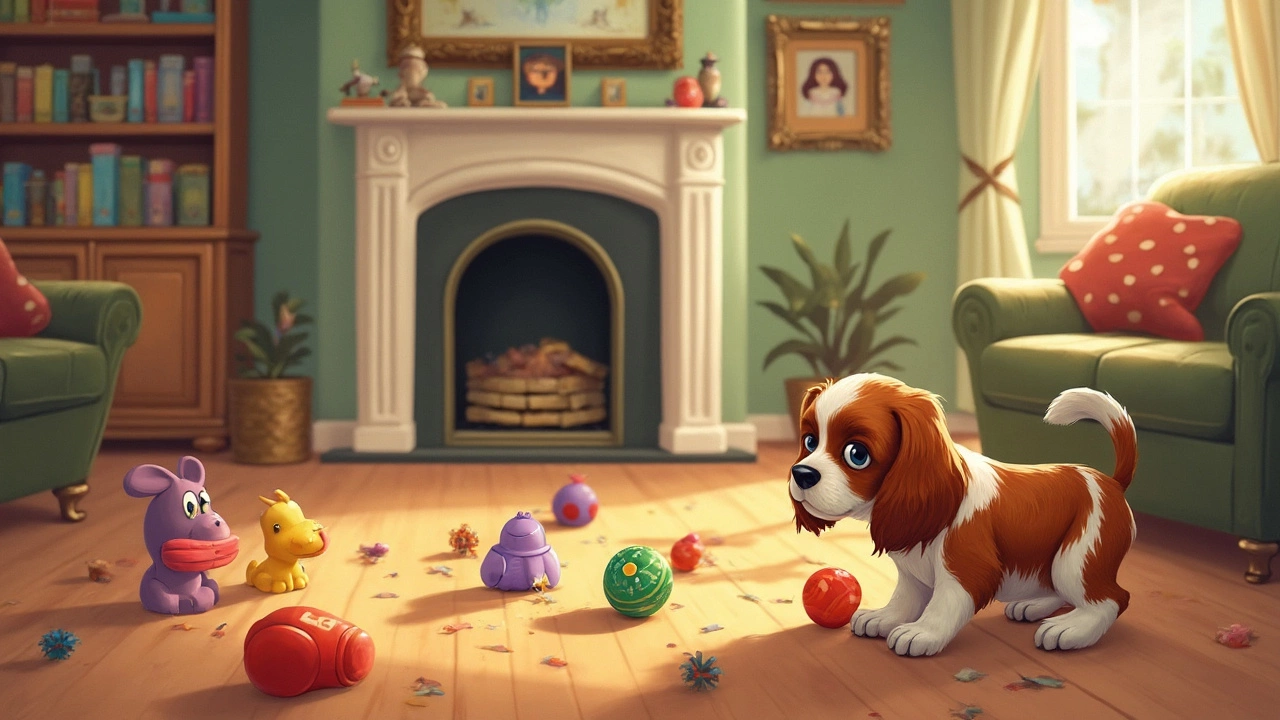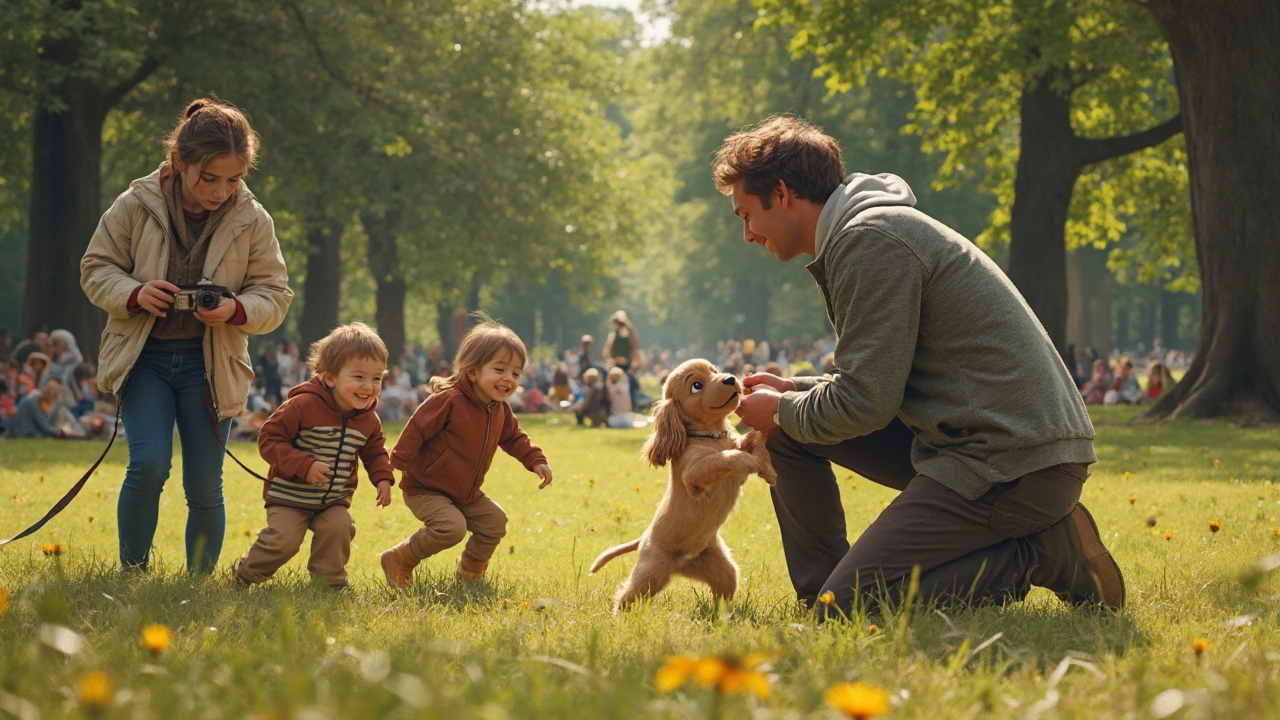Getting a new puppy? Awe-inspiring, right? Besides all the cuddles and wiggles, there's a whole world of learning for both of you. One of the first big steps? Teaching your little buddy their name. You might expect this process to be instant, but it’s a learning curve, just like when you memorized the steps of your favorite dance.
Most puppies start to recognize their names between 5 to 7 weeks old. That's when their brains are developed enough to begin responding to sound and recognizing it as special. But what if your pup seems a bit clueless even beyond that? Don't fret—every puppy learns at their own pace.
While repetition is key, turning this into a game can supercharge learning. Toss in a few toys during a playful session and call their name. If they even glance your way, reward them with playtime or treats. It's not only effective but keeps things fun!
- Understanding Puppy Name Recognition
- Tips for Teaching Your Puppy its Name
- Incorporating Toys in Learning
- Common Mistakes to Avoid
- Enhancing the Learning Process
Understanding Puppy Name Recognition
Puppies are like little sponges soaking up everything in their world. Around the 5 to 7 week mark, these adorable creatures start recognizing their names. It doesn't happen overnight, though; it’s more like your gradual morning wake-up rather than a sudden alarm clock moment.
The journey to recognition begins when puppies start associating sounds with outcomes. Once they figure out that hearing their name means food, play, or a comforting voice, they begin to connect the dots. It's these positive associations that can speed up the learning process.
A cool fact is that puppies' brains at this age are like a rapid development zone. Just like babies, they experience bursts of learning and growth, making this the ideal time to introduce new concepts like name recognition.
However, for those thinking it's purely the puppy’s task to learn, there's a bit of work for the humans too. Consistency is key. Using their name during delightful moments, like playtime or treat rewards, enhances their ability to identify it as something exciting and good.
Ever thought of mixing in some puppy toys during training? Turns out toys can be more than just chewables. Engaging them with a toy and calling their name regularly helps reinforce recognition, all while keeping it enjoyable and stress-free. It's one of the easiest ways to tap into their natural curiosity and eagerness to please.
Tips for Teaching Your Puppy its Name
Alright, so your fluffy friend needs to know when you're calling them. It's like giving them their very own human identity, and it’s a big deal! Here’s how you can make this teaching process smooth and effective.
Consistency is Key: Stick to one name. It might be tempting to use cute nicknames, but try to use their actual name at least during the initial learning stage. This helps them connect the sound with themselves.
Positive Reinforcement: When they respond to their name, which might just be a head turn in the beginning, shower them with praise and treats. Puppies love food rewards, and it makes them learn faster.
Keep Sessions Short and Sweet: Puppies have the attention span of, well, puppies! So keep it to about 5 minutes at a time. Do this a few times a day instead of one long session.
Use Toys: Integrate puppy toys in learning by showing or tossing a toy once you say their name. This triggers excitement, and they’ll start associating their name with good things.
Here’s a simple step-by-step way to teach their name:
- Get their attention by saying their name in a happy tone.
- Once they look at you, reward with a treat or play.
- Repeat this 5-10 times per session, several times a day.
Want to know if your puppy is a fast learner? Most puppies start recognizing their names in about a week with consistent training. It’s amazing how quickly they pick it up!
Also, did you know? According to some pet studies, dogs have a better understanding of their names if it’s two syllables. So, names like "Buddy" or "Bella" work great!
Keep the vibe positive and soon enough, they’ll be trotting towards you whenever their name is called. Happy training!

Incorporating Toys in Learning
Who knew toys could be such handy tools in teaching your puppy their name? Turns out, these little playthings are more than just fun—they're crucial for learning. A puppy toy can be a great way to grab your pup's attention and make learning moments memorable.
Start by picking a toy your puppy already adores. Maybe it's that squeaky ball or a plushie. Use it to create positive associations with their name. For instance, say their name while showing them the toy and wait until they look your way. Once they do, toss it to them as a reward. This not only gets them used to their name but also makes training feel like a game.
Play sessions can be great for reinforcing name recognition too. During a game of fetch, call out their name right before you throw a toy. The excitement of the game and the reward of catching the toy creates strong positive links in their mind.
- Interactive toys with sounds or movements can double the fun and engagement in learning sessions. These toys often grab more attention and can make your pup more excited to respond to their name.
- Rotate toys weekly to keep things fresh and interesting. Changing up the puppy toys ensures they don’t get bored and stay motivated.
Remember, it’s important to keep training sessions short and sweet. Puppies have short attention spans, much like a toddler, so end on a high note when both of you are still having fun.
Common Mistakes to Avoid
So, you’re in the midst of getting your adorable puppy to learn its name? Awesome! But there are some easy missteps you might fall into without even realizing it. Avoid these, and you'll both be on the fast track to success.
First thing’s first, don’t change the name frequently. Puppies need consistency, so switching names will only confuse them. Choose a name you love and stick with it.
Avoid calling their name when you're angry or they'll start associating their name with negative experiences. Keep it positive by using a cheerful tone, even when they’ve turned your favorite sandal into a chew toy.
It’s also crucial not to overuse their name during training sessions. Sound weird? Here's why: too much repetition can numb their response. Balance it out with commands or happy chatter.
Puppy toys can be incredibly helpful, but over-reliance can be distracting. While it’s great to use toys as rewards or part of a game, if the toy becomes the center of attention, your puppy might focus more on playing than listening.
Remember that short, frequent training sessions work best. So, don’t push long, tedious sessions. Your pup’s attention span is sort of like a goldfish, so engaging them in brief, enjoyable moments keeps their learning sharp.
Lastly, doing training only in one spot can be limiting. Mix it up! Practice in different locations so your little furball also listens in different environments, not just at home.
- Consistent name usage
- Positive reinforcement
- Moderate repetition
- Controlled use of puppy toys
- Varied training environments

Enhancing the Learning Process
Alright, so you want to fast-track how your pup learns and responds to their name? It’s easier than you might think, especially when you make it a total blast for both of you. First things first, patience and consistency are your best pals here. Dogs thrive on routine and clear communication.
Start by ensuring positive associations with their name. Whenever you call your puppy by name, do it with a happy voice. You want your puppy to immediately think something great is about to follow. According to dog behaviorist Linda Case, "Repetition and reward in a fun environment are the keys to unlocking a puppy’s learning potential."
Another great approach is to mix up the environment. Don’t just call out their name during feeding or play. Try calling them while you’re in different rooms or even outdoors. This broadens their understanding that their name means attention, no matter where.
And hey, don't forget the power of play. Use engaging puppy toys to make learning more interactive and entertaining. Incorporate toys that can double up as training tools. For instance, toys that squeak or make interesting noises can hold your puppy’s attention longer.
Here’s a simple step-by-step you can follow:
- Call your puppy by name in a lively tone.
- Once they make eye contact or come to you, reward them with a treat or a quick playtime.
- Repeat this process several times throughout the day in various settings.
Keep in mind to avoid using the puppy’s name in negative situations. Remember, their name should be a call to joy, not a signal of trouble.
Wanna geek out on some facts? Here’s a quick look:
| Item | Effectiveness |
|---|---|
| Repetition | 80% |
| Positive Reinforcement | 90% |
| Multiple Environments | 70% |
Incorporating these methods will make puppy training smoother and way more fun. Plus, your pup will love the attention and stimulation. Who said learning can't be fun, right?
